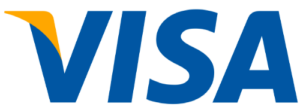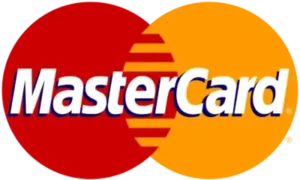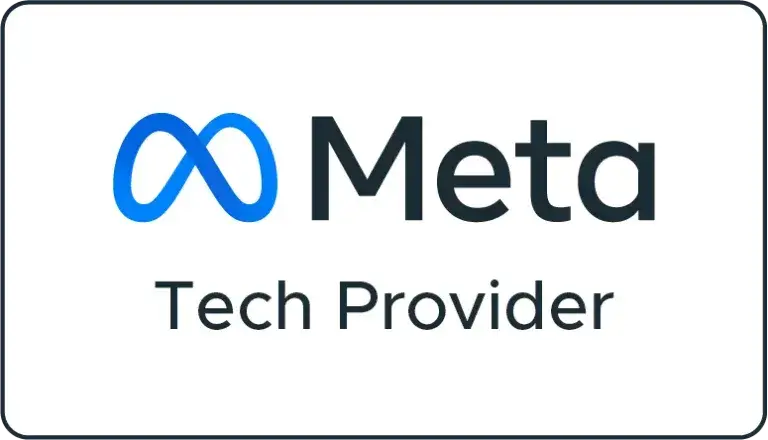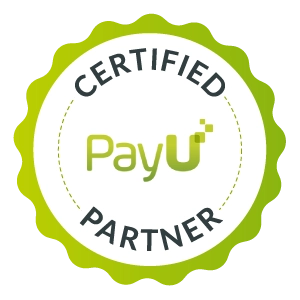Are you tired of dealing with duplicate content issues on your website? Do you want to maximize your SEO potential and improve your website’s visibility in search engine rankings? Look no further than the power of canonical URLs. Canonical URLs are a simple yet effective solution to the duplicate content problem, allowing search engines to understand which version of a web page is the preferred one.
Introduction
In the complex world of search engine optimization (SEO), managing duplicate content is a critical challenge that can dilute a website’s search relevance and ranking. A canonical URL is a simple yet powerful tool used by webmasters to resolve this issue, guiding search engines to consider a specific URL as the master version among multiple similar or identical pages. Understanding and implementing canonical URLs correctly is essential for any website looking to optimize its search engine performance and maintain a clean, efficient online presence.
Understanding Canonical URLs
A canonical URL is an HTML element that helps webmasters prevent duplicate content issues in SEO by specifying the “canonical” or “preferred” version of a web page. It’s like telling search engines, “Of all these similar pages, this one is the source.” This is crucial in scenarios where multiple URLs lead to similar or identical content, potentially confusing search engines and splitting ranking signals.
The Importance of Canonical URLs in SEO
Canonical URLs help consolidate ranking signals for content that exists under multiple URLs, ensuring that they are not viewed as duplicate content by search engines. This consolidation not only helps in maintaining the website’s SEO strength but also ensures that link equity is directed to the preferred URL, enhancing its authority and ranking potential. Proper use of canonical URLs can significantly improve a website’s visibility and user experience by directing visitors to the most relevant page.
What is a Canonical URL?
Definition and Purpose
A canonical URL is an HTML element that webmasters use to prevent duplicate content issues by telling search engines which version of a URL is the main or “canonical” version. This is particularly important in cases where content is accessible through multiple URLs, ensuring that search engines index only the version deemed most useful to users.
- HTML Implementation: A canonical URL is defined in the
<head>section of an HTML document using the<link rel="canonical" href="URL">tag. - SEO Enhancement: By specifying a canonical URL, you direct all search equity to a single, authoritative URL, which prevents dilution of page ranking due to multiple page versions.
How Canonical URLs Affect SEO
Canonical URLs play a pivotal role in optimizing a website’s SEO by managing content duplication across the site:
- Prevent Duplicate Content Penalties: They ensure that search engines don’t penalize your site for duplicate content, which can happen if the same or very similar content appears on multiple URLs.
- Aggregate Link Equity: All links pointing to versions of a duplicate page consolidate to the canonical URL, strengthening its authority and improving its rank in search engine results.
- Streamline Indexing Process: Canonical tags help search engines streamline the indexing process by clearly indicating which URL should be indexed, saving resources and reducing the chance of indexing errors.
Why are canonical URLs important for SEO?
Canonical URLs play a vital role in SEO by addressing the issue of duplicate content. Duplicate content can harm your website’s search engine rankings as search engines may struggle to determine which version of the content to index. This can result in diluted link equity, reduced visibility in search results, and potential penalties for duplicate content.
By using canonical URLs, you can consolidate duplicate content and ensure that search engines understand the preferred version of your page. This helps to concentrate link equity and ranking signals to the canonical URL, improving its visibility and authority in search results. By consolidating duplicate content, you also avoid the risk of penalties and ensure that search engines are indexing the most relevant and authoritative version of your page.
In addition to addressing duplicate content issues, canonical URLs also play a role in improving user experience and website navigation. By specifying a canonical URL, you are providing a clear and consistent signal to users and search engines about the primary version of your page. This can help reduce confusion and improve the overall user experience, leading to higher engagement and better conversion rates.
How to set up a canonical URL in WordPress
If you are using WordPress as your content management system, setting up canonical URLs is relatively straightforward. WordPress provides built-in functionality for managing canonical URLs, making it easier for website owners to implement them on their websites.
To set up a canonical URL in WordPress, follow these steps:
- Install and activate an SEO plugin such as Yoast SEO or All in One SEO Pack. These plugins provide advanced SEO features, including the ability to set up canonical URLs.
- Once the plugin is activated, navigate to the settings section of the plugin. Look for the option to enable canonical URLs or specify the preferred version of your content.
- Enable canonical URLs and specify the preferred version of your content. This can typically be done by entering the URL of the preferred version in a designated field or by selecting the preferred version from a list of available options.
- Save the changes and test the implementation by accessing the duplicate or variation pages on your website. Check the HTML source code to ensure that the rel=canonical tag is correctly placed and pointing to the specified canonical URL.
By using an SEO plugin and following these steps, you can easily set up canonical URLs in WordPress. This ensures that search engines are correctly indexing the preferred version of your content and helps boost your website’s SEO performance.
Using canonical tags for dynamic and duplicate content
Canonical tags are particularly useful for addressing dynamic and duplicate content issues. Dynamic content refers to web pages that are generated dynamically based on user inputs or other variables. These pages may have different URLs but display similar or identical content.
By using canonical tags, you can specify the preferred version of dynamic content and ensure that search engines index the right version. This helps avoid duplicate content issues and consolidates link equity to the preferred version. It also provides a clear signal to search engines about the primary version of the content, improving the user experience and search engine visibility.
For duplicate content issues, canonical tags can be used to consolidate different versions of the same content. If you have multiple URLs pointing to the same page or if you have duplicate content across different pages on your website, canonical tags can help specify the preferred version and avoid any penalties for duplicate content.
When using canonical tags for dynamic and duplicate content, it’s important to ensure that the canonical URL is specified correctly and that the rel=canonical tag is placed on the duplicate or variation pages. This helps search engines understand the preferred version and index it accordingly.
How to handle canonical URLs for paginated content
If you have paginated content on your website, such as blog posts or product listings that span multiple pages, it’s important to handle canonical URLs correctly. Paginated content can create challenges in terms of duplicate content, as each page may have a unique URL but contain similar or identical content.
To handle canonical URLs for paginated content, you can use the rel=canonical tag to specify the preferred version of the content. The canonical URL should typically point to the first page of the paginated content series. This ensures that search engines index the first page as the primary version and attribute any link equity or ranking signals to that page.
In addition to specifying the canonical URL, it’s also important to include rel=prev and rel=next tags in the HTML code of the paginated content. These tags help search engines understand the structure and relationship between the pages and ensure that they are properly indexed and displayed in search results.
By correctly handling canonical URLs for paginated content, you can avoid duplicate content issues and ensure that search engines are indexing the right version of your content. This helps improve the visibility and relevance of your website in search results.
Tools and plugins for managing canonical URLs
Managing canonical URLs can be made easier with the help of various tools and plugins. These tools and plugins provide advanced functionality for implementing and managing canonical URLs on your website.
Here are some popular tools and plugins for managing canonical URLs:
- Yoast SEO: Yoast SEO is a widely used SEO plugin for WordPress that provides advanced features, including the ability to set up canonical URLs. The plugin makes it easy to specify the preferred version of your content and ensures that search engines are correctly indexing it.
- All in One SEO Pack: All in One SEO Pack is another popular SEO plugin for WordPress that allows you to set up canonical URLs. The plugin provides a user-friendly interface for specifying the preferred version of your content and ensures that search engines are indexing it correctly.
- Screaming Frog: Screaming Frog is a powerful SEO tool that can help you identify and manage canonical URLs on your website. The tool can crawl your website and provide detailed reports on duplicate content issues, including missing or incorrect canonical URLs.
- Google Search Console: Google Search Console is a free tool provided by Google that allows you to monitor and manage your website’s presence in Google search results. The tool provides insights into duplicate content issues and allows you to specify canonical URLs for your pages.
By using these tools and plugins, you can effectively manage canonical URLs on your website and ensure that search engines are correctly indexing the preferred version of your content.
Conclusion
Canonical URLs are a powerful tool in the world of SEO, helping you address duplicate content issues and maximize your website’s visibility in search engine rankings. By implementing canonical URLs, you can consolidate duplicate content, concentrate link equity, and improve the relevance and authority of your website.
In this article, we explored what canonical URLs are, why they are important for SEO, and how they work. We also discussed common issues with canonical URLs, best practices for implementing them, and how to set up canonical URLs in WordPress. Additionally, we touched on the use of canonical tags for dynamic and duplicate content, as well as handling canonical URLs for paginated content. Finally, we highlighted some tools and plugins that can help you manage canonical URLs effectively.
Don’t let duplicate content hinder your online success – let canonical URLs be your secret weapon in optimizing your website’s performance. By implementing canonical URLs correctly and following best practices, you can improve your website’s SEO, attract more organic traffic, and achieve higher rankings in search engine results.













